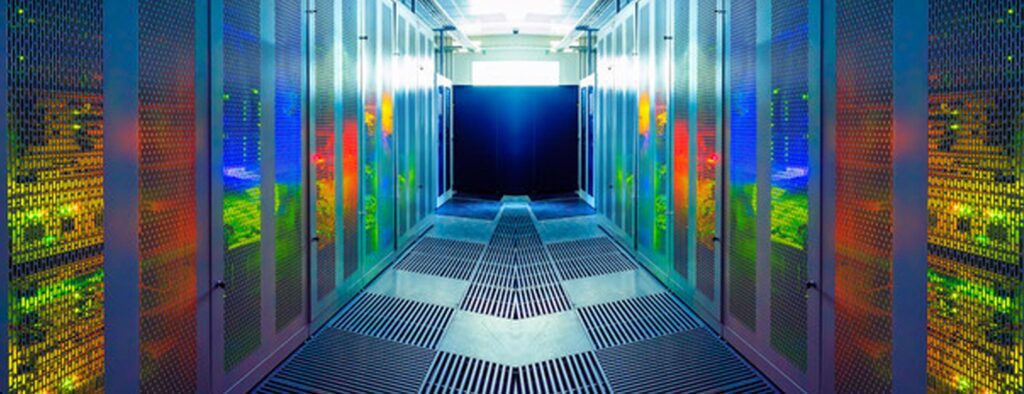
Data center air filtration is not only important to building occupant health, but it is also an important component of ensuring proper data transfer and electronic component stability.
Recent changes in regulations have left data centers more vulnerable than ever to equipment failure, and the insulating properties of some contaminants can cause cooling costs to skyrocket.
Furthermore, the increased use of free cooling, especially in urban areas, has led to increased rates of failure of electronic components from the contaminants that make their way indoors.
Data Center Contaminants
Particulate matter, humidity, gaseous contaminants, and ground-level ozone are all introduced into the data center cleanroom environment either through operations, maintenance, or infrastructure.
Outdoor air used for pressurization, ventilation, or cooling is the primary source of airborne contaminants in a data center environment. Air that is used for these purposes must be cleaned prior to allowing it to infiltrate a data center.
Gaseous contaminants, ground-level ozone, and humidity oxidize metal found on electronic components, affecting data transfer.
In addition to causing equipment failure, dust accumulation can increase the cost to cool the facility. Even sub-micron sized dust particles can accumulate on equipment and become an insulator, reducing the lifespan of equipment and increasing cooling costs.
Urban data centers are especially vulnerable to these contaminants, particularly if they utilize free cooling. Common failures include corrosion damage to motherboards, hard disk drives, transistors, capacitors, and graphics cards.
Air filters designed specifically to capture these types of contaminants are essential to the health and safety of employees, for preventing damage to electronic components, and for keeping cooling costs low.
Resolving Indoor Air Quality Issues in Data Centers
Implementing effective air filtration, including utilizing the right types of air filters, can help data centers keep up with changing regulations, reducing equipment failure and cooling costs as well as improving the health and safety of workers.
Experts in the field of data center indoor air quality recommend using a gaseous contaminant removal air filter with at least a MERV 13 rating to provide maximum protection to building occupants.
Environmental monitoring and control can help mitigate many of the issues caused by indoor air contaminants in a data center. Steps to take in a comprehensive plan include:
• sealing all areas of the building where dirty outdoor air can get in, including windows, doors, and any penetrations in the walls,
• installing monitors to constantly evaluate room air pressure (if the building is designed for the cleanroom to have a positive air pressure),
• measuring the corrosion rates in both outdoor and indoor air,
• measuring airflow at both the supply, exhaust, and at each computer room air-conditioning unit,
• developing profiles for temperature and humidity control, and
• utilizing air filters appropriate for measured contaminants.
Conclusion
Proper indoor air quality in a data centers is crucial to keeping operational costs at a minimum and protecting workers. Air filters designed for the types of contaminants encountered in a cleanroom environment are essential to worker safety and to protecting equipment, data, and products.
Advanced Filtration Concepts (AFC) distributes air filters that produce cleaner air, allow for more efficient airflow, and have a lower total cost of ownership than competitive products. Large data center clients have saved six figures in the total cost of ownership by using AFC air filtration products. Whether your data center is powering a single office or thousands of offices on multiple continents, AFC has a solution to fit your needs.
For more information on what you need to know about indoor air quality in data centers, contact AFC online. Or, call us, at 323-832-8316.

Advanced Filtration Concepts is a
Certified Veteran-Owned Small Business.
